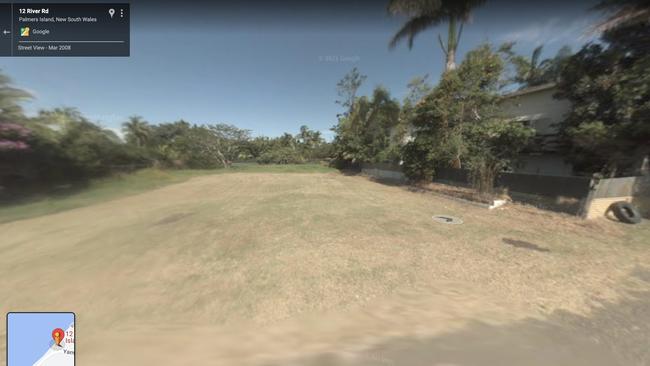Clarence council refuses Palmers Island home over erosion risk
A NSW couple snapped up a $350,000 riverfront property for just $20,000 knowing it had a building ban. They now seek approval to build a house despite the restriction.
Property
Don't miss out on the headlines from Property. Followed categories will be added to My News.
A couple who snagged a bargain riverfront Palmers Island property have hit a roadblock after trying to do get around the very restriction that made the land so cheap.
The former Maclean Shire Council bought the land for $350,000 in 2004 as part of a voluntary buyback scheme related to riverbank erosion.
The council demolished the house on the block at the time and restricted any further occupation or use on the land.
The property went back on the market at a value reflecting the building prohibition.
Darren and Tricia Nicole Haaijer bought 12 River Road, Palmers Island in November 2016 from the council for a measly $20,000, knowing they could never develop the land.
Now the Haaijers want to build a house on the land, and have applied to remove the restrictions on the property that have been in place for almost two decades.

Four-bedroom properties similar to the Haaijers’ proposed build begin at $820,000 in Palmers Island.
The Haaijers, who own the adjoining property, applied to Clarence Valley Council to develop the cleared land sitting between two houses.
Council staff recommended refusing any variation or modification on the land use restriction, relying on a bank stability assessment made more than 20 years ago.
Darren Haaijer, speaking against a council recommendation to refuse his development application, said he could not find any information showing the council had “actually surveyed our area” before declaring riverbank erosion would prohibit development on the land.
“It looks like we’ve just been extrapolated into that zone for some reason”, he told councillors at Tuesday’s general meeting.
“It looks like we’ve just been extrapolated into that zone for some reason,” he told councillors.
“The last flood — the worst one on record — was only about 400mm deep right through the property as opposed to further down stream.
“About 200m further down from the property is where the one-in-100 year erosion starts.
“The sculpting on the bank next door to the property actually started in the late 1990s when they had two water mains burst.”

Mr Haaijer said the council then removed all the vegetation off the bank but noted there were mangroves growing along the bottom.
He said Palmers Island village got about 60cm of water in flooding events “before we’ve even got water just starting on the property”.
“That’s how much higher we are in elevation,” she said.
“There’s no real tidal flow.
“We’ve planted 180 lomandras (trees) on top even though the last flood, nothing happened, nothing moved.”
An erosion report Mr Haaijer provided to the council from December 2021 concluded “restrictions do not appear justified for this particular property (12 River Road)”.
It suggested accretion had been occurring adjacent to the plot of land, with no significant change in the foreshore position between 1969 and 2016.
“It is unclear to us why the property at No 12 River Road has had restrictions on development placed on it relating to erosion of the Clarence River”, Dr David Wainwright and Emma Graham, of Salients Consulting, said in their report.
One of the councillors this week asked Mr Haaijer why he was applying to develop land when was aware of the restrictions when he bought it.
He told the chambers he had approached the council before buying the property and was informed, verbally and in an email, that he could make an application to develop it.
Councillors asked to see the email evidence.
Clarence Valley Council voted to refuse any changes to the development restrictions on the property.
Councillor Greg Clancy suggested Mr Haaijer apply to have the restriction removed from the mapping before he submit any further development applications.





